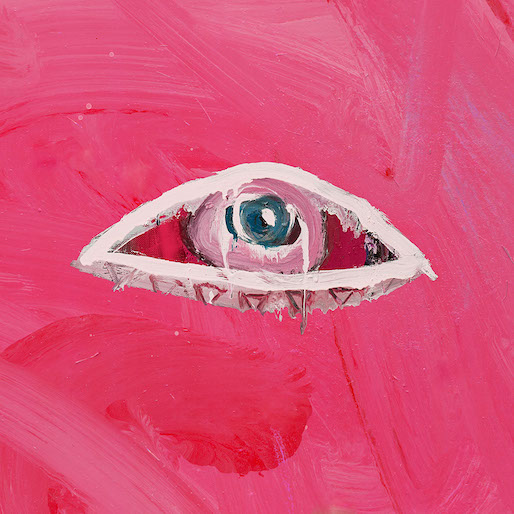I think it’s fair to say that a lot of people have been waiting a long time for Of Monsters and Men (OMAM) to deliver their third studio album. It’s been four years and seems longer. Indeed it is two years since they posted on social media “Third album, let’s do it”! It was starting to look like a case of ‘Little Talks.’
Speaking of which, that song, from debut album ‘My Head is an Animal’ is their benchmark, their yardstick, their leitmotif. The most streamed Icelandic ditty of all time to date (and possibly for ever) it was symbolic of an album of happy and ostensibly fairytale indie folk music with memorable tunes but with dark, foreboding lyrics. Lyrics that depicted monsters (and men) fighting over dystopian futuristic cities built out of lava fields, pet dragonflies, polar bears and ‘the creatures of snow’ taking down the invading Queen Bee and her men (in one of the most conspicuous ecological metaphors of all time), battles with grizzly bears in the outback, the loneliness of old age in their frozen land. And suicide.
The album also introduced to the world ‘Songbird’ Nanna Bryndis Hilmarsdóttir’s unique voice, which croaks and fades on the last syllable of a line so you sometimes can’t quite make out what she’s saying.
The second album, ‘Beneath the Skin’, attempted to do just that, to show a more personal side to their song writing although they weren’t able to escape the call of the Icelandic fable entirely. The lyrics suggested they were singing about themselves and their experiences though rather than those of imaginary characters and they experimented with far more complex musical arrangements. As I noted at the time they had put away childish things but in doing so had lost some of their immediacy.
And so, to ‘Fever Dream’, and what is something of an experiment for OMAM, with the two lyricists, Nanna and Ragnar (Raggi) Þórhallsson coming at their songs from an individual perspective rather than a dual one and, according to Nanna, a more feminine touch generally.
The first track and first single to be released from it, ‘Alligator’, had given us a glimpse of what we might expect, with an absence of acoustic guitars, a powerful all-electric presence, a pounding bass line helping spell out the melody and Nanna singing of feral dreaming and 22 women on the banks of a stream (it might reference the 2015 film about WW2 comfort women for the Japanese army, it’s hard to tell but it wouldn’t surprise me). Visually, on an early video they looked harder, more focused, and with none of the larking around that has typically accompanied OMAM videos, while Nanna had adopted the shorter punky black hair style of a Joan Jett or Chrissie Hynde.
It is difficult to reconcile this thumping rocker with say ‘Mountain Sound’ or ‘Love, Love, Love’ from the first album; it could be a different band altogether. This video suggests their visual proclivities though haven’t changed one jot.
‘Ahay’ showcases Raggi in the lead vocal role with Nanna providing backing. It’s another first for OMAM, a standard pop song (though there are more to come), but on an altogether higher plane. Nanna has spoken of her desire to bring energy and a sense of empowerment to the album and the presence of Rich Costey as producer, who has also worked with Muse and Fiona Apple, is telling. Costey has introduced a degree of bombast, notably in this song, without it becoming insufferable.
‘RóRóRó’ is a strange song in that its verses could have been lifted out of either of the two earlier albums (“I’m tired and I think I want to go home” laments Nanna) while its big choruses are more representative of this album. Yet again drummer Arnar Hilmarsson demonstrates that he can be relied on for an innovative beat.
In ‘Waiting for the Snow’ a slow ballad that could easily become cloying Nanna mulls over the ‘mountains’ that creates for herself which she has to cross, but which “grew bigger than me” presumably meaning they were to a degree imaginary, she is merely crying wolf to herself and there are bigger things to worry about. Get a grip, girl. The fact it doesn’t become syrupy is down to some distractive effects such as distorted backing vocals and drips which don’t always work, but they do here.
‘Vulture, Vulture’ has the two of them back in the mountains (much of the action in OMAM songs is there, or in the woods or at sea) shouting down into the valleys below. On this occasion Raggi’s laconic vocal delivery is in a head-on car crash with some of the more overt delivery by Nanna of any song she’s sung as they struggle to tackle negativity in their lives. In a way it’s a natural successor to ‘Little Talks’ but without the kick-ass killer melody.
‘Wild Roses’, in which Nanna’s croaky disappearing voice pays us a brief visit, is the equivalent of ‘Beneath the Skin’s’ ‘Organs’, a slow-building folk power ballad, though it isn’t as powerful. It is full of imagery though, from the opening line, “Wild roses on a bed of leaves in the month of May” to breathing vines to high-flying moths in the sky. There are a couple of interesting incursions from synthesisers and an auto-tuned voice which could be Iselin Solheim of Alan Walker’s ‘Faded’ fame. Then towards the end it picks up into a typical OMAM big finish and the first introduction of brass, which suggests the presence of the ever-popular Ragnhildur Gunnarsdóttir in the touring line-up. In any case, how could they play ‘Little Talks’ without her?
‘Stuck In Gravity’ opens with a synthesised soundtrack that could belong to the film ‘Gravity’, before Raggi weighs in with an attempted impersonation of Lee Marvin singing ‘Wandering Star’. You’re a tenor, lad, stay in the zone. It’s quite a heavy piece lyrically and I was shocked that at 30 he’s already thinking about his mortality. There are various noises-off, synth parts and guitar reverb, which are annoying, but as it progresses and Nanna joins on vocals it shifts gear into a forceful anthem. (Incidentally, there is a repeated line, ‘[My] Head is still an animal” in this song, which is worthy of further investigation).
‘Sleepwalker’, a duet, offers a pleasant laid-back middle of the road melody which could belong to any of dozens of male-female duos trying to break into the charts. But I suspect it is one of those songs which, while not hitting the spot immediately, will grow to become a favourite. Just listen to it twice to see what I mean; you hear so much more the second time of asking.
‘Wars’ is held together by a dream of a bass line and the jangly synths that have made their way increasingly to the fore as the album progressed. It’s the most danceable track I can remember them coming up with; even Hilmarsson’s drumming belongs on the dance floor. Come to think of it, it’s the only one. I must remember to check the sleeve notes to see if James Murphy has hijacked them like he did with Arcade Fire.
‘Under a Dome’ takes OMAM back into poignant ballad territory, but with the arrival of a heavy synthesised backing, industrial level guitar reverb, doom-laden percussion and vocoder-ed lyrics there’s too much going on. They might have been better just strumming their acoustic guitars, which haven’t had a look in so far.
‘Soothsayer’ completes the album and with its 1980’s feel and melody, and little guitar licks, could even be an ABBA song in parts. Only twice before on the album (‘Wild Roses’ and ‘Stuck in Gravity) did they come anywhere near the trademark big OMAM finish. I thought they might do it on this one but it seems to trip over some of the hurdles along the dash before collapsing in front of the finishing line.
So we have an album which starts with a rocking track the likes of which is never repeated and which fizzles out with another that promises a grand old OMAM finish but withers on the vine. In between, the band experiment with all manner of sounds, mainly electronic ones. Some of them work very well, others don’t. The arrangements aren’t as complex as those on the previous album, which does make it more accessible.
The one constant is the vocal interaction between Nanna and Raggi, which is invariably marvellous.
Unfortunately, try as they might, they haven’t nailed that killer melody, they didn’t find another ‘Little Talks’ or ‘Crystals’ from ‘Beneath the Skin’. That shouldn’t really matter but some of their original fans may be disappointed.
I suspect this album, like ‘Beneath the Skin’, will require a lot more than a couple of hearings for its quality to sink in but I can’t get away from the nagging suspicion that they may have tried a little too hard to find a new direction here when perhaps one wasn’t even required.
‘Fever Dream’ is released on July 26th, on Republic Records.




